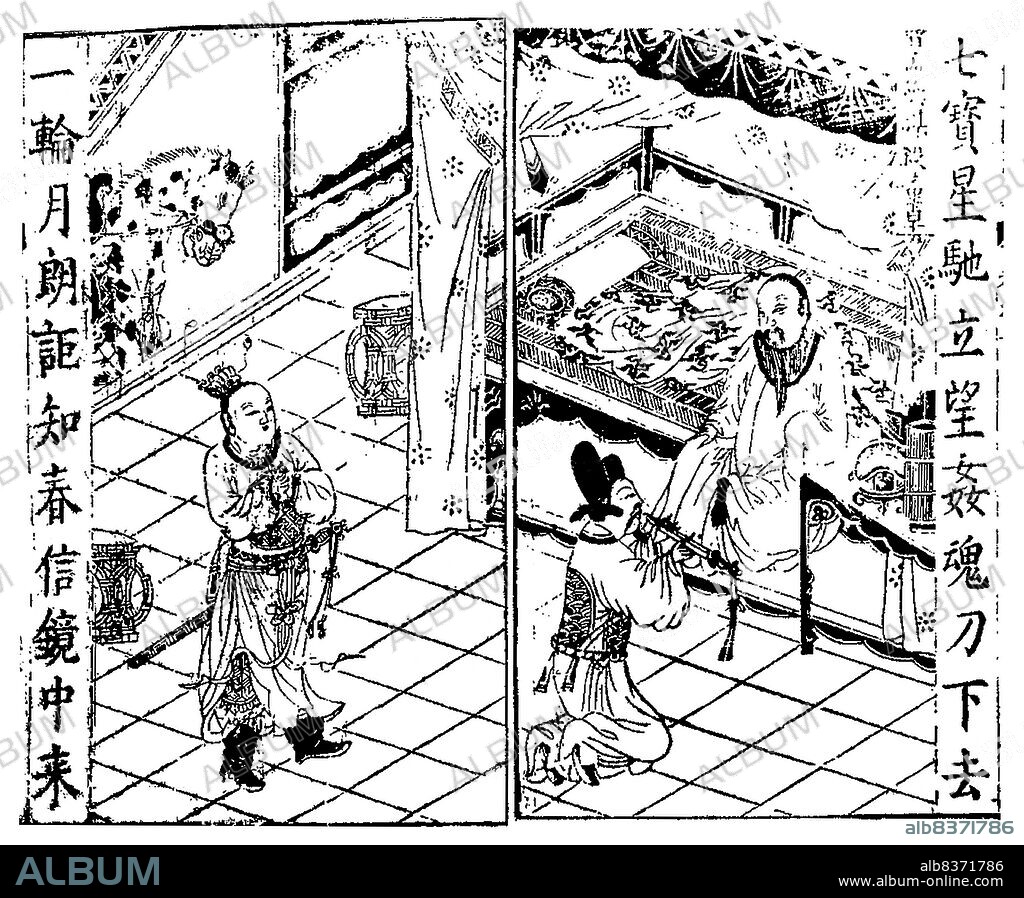alb8371786
China: Cao Cao (155-15 March 220 CE) presents the Seven Star Precious Sword, from a Ming Dynasty edition of 'Romance of the Three Kingdoms' called Sanguo zhi tongsu yanyi< / i>

|
Añadir a otro lightbox |
|
Añadir a otro lightbox |



¿Ya tienes cuenta? Iniciar sesión
¿No tienes cuenta? Regístrate
Compra esta imagen

Título:
China: Cao Cao (155-15 March 220 CE) presents the Seven Star Precious Sword, from a Ming Dynasty edition of 'Romance of the Three Kingdoms' called Sanguo zhi tongsu yanyi< / i>
Descripción:
Ver traducción automática
Cao Cao (155-15 March 220 CE), courtesy name Mengde, was one of the most important warlords during the Tree Kingdoms period. The penultimate Chancellor of the Eastern Han dynasty, Cao rose to great power in the last years of the dynasty. When the Eastern Han dynasty fell, Cao Cao was able to secure the largest and most prosperous cities of the central plains of northern China, uniting under his rule.
. During the Three Kingdoms period, he laid the foundations for what would become the state of Cao Wei, posthumously honoured with the title of 'Emperor Wu of Wei'. Though he had been very successful as the Han chancellor, his handling of the Han emperor Liu Xie was harshly criticised by many, and led to a long-running civil war, with opposition flocking to the banners of rival warlords Liu Bei and Sun Quan. Cao was unable to quell the civil war, and he died in 220 CE before he could unite China under his rule.
. While Cao Cao was praised as a brilliant ruler and tactical genius who respectfully treated those beneath him like they were family, later historical accounts and fictional literature such as 'Romance of the Three Kingdoms' portray him as a cruel and merciless tyrant.
. During the Three Kingdoms period, he laid the foundations for what would become the state of Cao Wei, posthumously honoured with the title of 'Emperor Wu of Wei'. Though he had been very successful as the Han chancellor, his handling of the Han emperor Liu Xie was harshly criticised by many, and led to a long-running civil war, with opposition flocking to the banners of rival warlords Liu Bei and Sun Quan. Cao was unable to quell the civil war, and he died in 220 CE before he could unite China under his rule.
. While Cao Cao was praised as a brilliant ruler and tactical genius who respectfully treated those beneath him like they were family, later historical accounts and fictional literature such as 'Romance of the Three Kingdoms' portray him as a cruel and merciless tyrant.
Crédito:
Album / Universal Images Group / Pictures From History
Autorizaciones:
Modelo: No - Propiedad: No
¿Preguntas relacionadas con los derechos?
¿Preguntas relacionadas con los derechos?
Tamaño imagen:
4800 x 3959 px | 54.4 MB
Tamaño impresión:
40.6 x 33.5 cm | 16.0 x 13.2 in (300 dpi)
Palabras clave:
ART • ARTE • ARTES • ASIA • ASIATICO • CHINA • CHINO • DIBUJO • DINASTIA MING • EMPERADOR • ILUSTRACION • JEFE MILITAR • KAISER • LITERATO • LITERATURA • LITERATURE • MING • MONARCA • MONARQUIA • REALEZA • REY
 Pinterest
Pinterest Twitter
Twitter Facebook
Facebook Copiar enlace
Copiar enlace Email
Email
